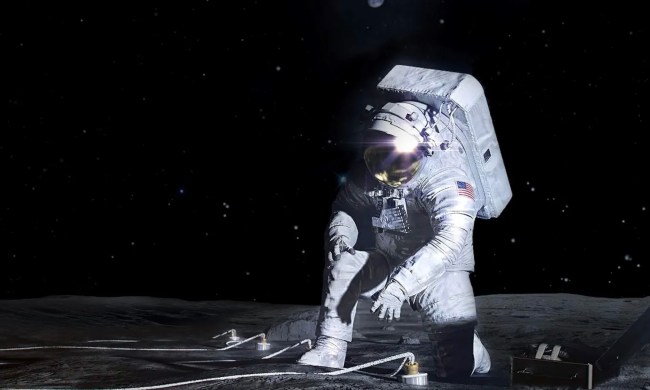NASA is looking to recruit private companies to help it collect up space resources for cold, hard cash. And it’s starting with a request for moon dirt and rocks.
“Today, we’re taking a critical step forward by releasing a solicitation for commercial companies to provide proposals for the collection of space resources,” Jim Bridenstine, NASA administrator, said in a blog post published Thursday. “When considering such proposals, we will require that all actions be taken in a transparent fashion, in full compliance with the Registration Convention, Article II and other provisions of the Outer Space Treaty, and all of our other international obligations. We are putting our policies into practice to fuel a new era of exploration and discovery that will benefit all of humanity.”
Don’t think about forging some moon dust in your own backyard in hope of giant profits, though. In addition to the sample, NASA also requests that imagery be provided of the collection process, alongside data that identifies its exact collection location. After the collection company transfers ownership of the lunar regolith or rocks over to NASA, Bridenstine writes that “the collected material becomes the sole property of NASA for our use.”
According to The Verge, NASA will pay between $15,000 and $25,000 for the rocks. That’s a bit cost-prohibitive if your plan is to fund the necessary R&D and launch with NASA’s resulting paycheck. Nonetheless, for established private space giants already conducting launches, it could be worth considering. More importantly: It opens up the concept of a space marketplace that could, presumably, result in significantly larger sums further down the line. (With trillions of dollars of space resources to be harvested from asteroids, this is likely to be only the beginning.)
The goal on the part of NASA is for retrieval and transfer of ownership to be completed before 2024, when the space agency aims to put the next humans on the Moon. The solicitation is open to companies all over the world, and NASA says it could make multiple awards if several players are keen to get involved. The funds will be paid in three installments: 10% initially, another 10% on launch, and the remaining 80% after the mission has been completed.


